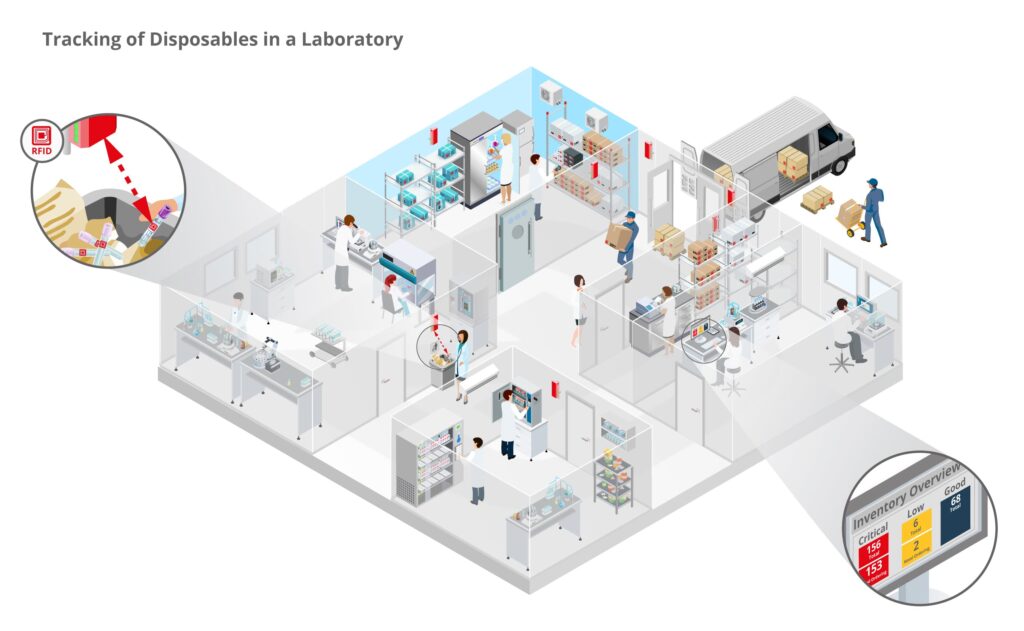Real-time inventory based on a passive RFID system aids in maintaining accurate stock levels, enabling laboratories to operate more effectively.
AT A GLANCE
- server-based inventory tracking and management
- item detection at strategic checkpoints
- automatic clearing during disposal
PROBLEM DEFINITION
In a medical laboratory, knowing what you have in stock and where it is located is extremely important for reducing costs and increasing productivity. The challenges usually surrounding a lab environment involve the loss of samples, loss of time looking for equipment, and labeling errors.
SOLUTION
An RFID localization system addresses all of these issues through automated tracking and control, which results in cost savings and a reduction of redundant work. The system can be used to track reagents and disposables, and offers a time-saving potential of up to 80%.
Personnel can manage laboratory inventory, place orders and keep track of them all in one place. Disposables are registered at strategic checkpoints – in the goods receiving department, at several storage locations, and at disposal points (where items are automatically cleared from the system). In addition, products can be manually checked in using an RFID handheld scanner. The system allows users to keep track of where inventory items are and how much is available, helping to avoid product shortages or stock levels that are too high. Laboratories can minimize the number and amount of inventory items stored, decrease waste generation and control waste disposal costs.
TECHNICAL IMPLEMENTATION
infsoft Locator Nodes are placed in strategic positions within the laboratory and are connected to UHF antennas, which enable an extended range of up to 6 meters. The disposables are labeled with passive RFID tags. The Locator Nodes detect labeled objects that pass in their read range. They function as a power source and transfer radio-frequency energy to the tag. ID and data from the RFID tag are then captured by the Locator Nodes and forwarded to the infsoft LocAware platform®, where the data is processed. RFID readers can come in two types: fixed (Locator Nodes, deployed in the environment) and mobile (typically a handheld).
Employees can access the data via a web interface and check the inventory status at any time. Using infsoft Tracking, further attributes such as product type and inventory number can be assigned to the RFID tags, which can also be searched for.
The inventory data are linked to conditions in the infsoft Automation Engine, allowing notifications or automated orders to be triggered, for example when stock levels fall below a certain value.







